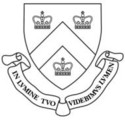
|
Columbia University Columbia Law |

Every year, from October to April, the Willem C. Vis International Commercial Arbitration Moot, or Vis for short, occupies, perhaps consumes, the lives of thousands of law students from around the world. The growing ranks of "Vis mooties" have their own jargon, inside jokes, T-shirts, an alumni association (the Moot Alumni Association), a law journal (The Vindobona Journal of International Commercial Law and Arbitration), and songs that should not be performed in public. Why Vis?
Vis is vogue (educationally speaking)
Vis immerses law students in a thoroughly practical (albeit hypothetical) private dispute in international trade. Along the way, students learn alot about commercial law and arbitration from the perspective of both academics and practitioners. In all these ways, Vis is a great complement to law school education and excellent preparation for any area of legal practice. Learn more about the CISG, the commercial law used in Vis, and arbitration.
Vis is international, like the UN but nicer
Vis brings together thousands of students from hundreds of schools and dozens of countries around the world with a rich array of perspectives on law and legal systems. Inside and out of the competition rounds, Vis helps the legal community become globally connected.
Vis is suave or at least not entirely dorky
Vis emphasizes the three fundamental disciplines of a lawyer: the intellectual ability to understand a body of law, the creative ability to apply the law to concrete facts, and the persuasive ability to advocate on behalf of a client through writing and speaking. Vis makes better lawyers or at least lawyers who are a little less dorky.
Vogue, International and Suave, have you got Vis?
October. The Problem is released, our lives are forfeit. Vis begins in early October with the release of the Problem (aka Procedural Order No. 1). The Problem is the basis for the competition and sets out a detailed hypothetical dispute between two international commercial parties. It includes the claim of damages from the Claimant, the answer from the Respondent, evidence from the parties, and relevant correspondence. Part of the challenge is to understand both sides of the story and piece together the facts to address the main issues described in the Problem. Time to start researching and writing.
November. Clarification Questions released. Teams may request clarifications of the Problem from the Vis organizers up to a few weeks after the Problem is distributed. The questions the Vis organizers think worth answering are collected and the answers given to all teams in early November as the Clarification Questions (aka Procedural Order No. 2). Ideally by the time the Clarifications are released, you have finished much of the research, outlined the basic arguments (for both sides!), and started writing Claimant's memo.
December. Claimant memo due, crunch time. A team's entry into the moot is complete only with the submission of its Claimant's memo in early December. This memo is where you explain how Respondent has wronged Claimant and why Claimant (and its wonderful counsel) deserves boatloads of money. You may not sleep for a night or two or several but how beautiful it is when done. Enjoy a well-deserved (and brief!) respite for the holidays then off to work on Respondent's memo.
January. Respondent memo due, crunch time part deux. Respondent's memo is due around late January. This is where you explain how Claimant messed itself up and should stop bothering us all with its spurious claims. Once the Respondent memo is done, the pace is more relaxed for a while.
January-March. Practice, practice, practice. These months are spent practicing with other schools in "pre-moots" and refining arguments down to the core. The Columbia Vis team generally travels around the Northeast United States for pre-moots. Then we hit the European pre-moots one to two weeks before the oral rounds in Vienna.
March-April. Going big time. Months of effort culminate with the oral rounds held in Vienna and the sister moot in Hong Kong (the Vis East). There are four preliminary rounds. Generally, schools from common law countries are matched against those from civil law countries. Experienced schools also tend to face inexperienced ones. In Vienna, the top 64 teams then advance to eliminations while the fortunate teams get a few more days to enjoy the city. Regardless, all are then privileged to call themselves Vis mooties.
Back to top